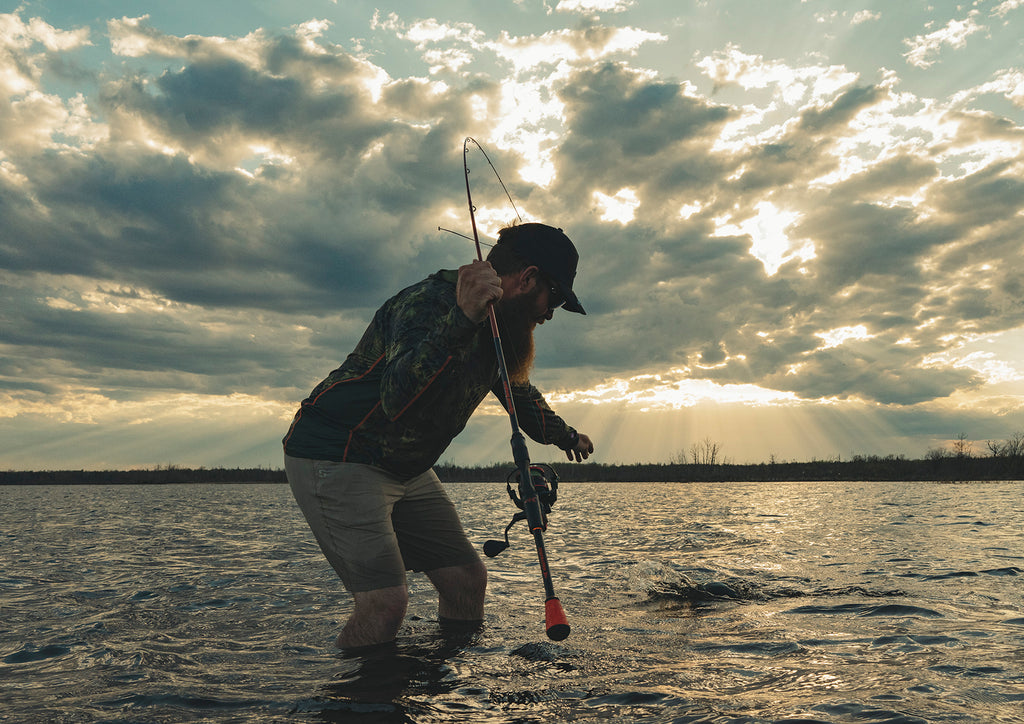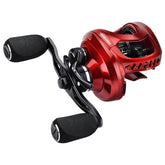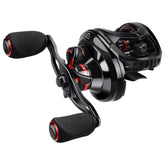
A Guide For How Much Line To Put On A Spinning Reel
The amount of line you put on your spinning reel greatly impacts its performance. If you fill your reel with a line properly, you should not have any problems. A spinning reel should be filled to just below the point where the inside of the spool lip begins. If you are not 100% sure, slightly less is better than too much.
Spool designs vary and sometimes it’s unclear where to finish a fill. The bottom line is that the spool lip needs to sit above the fishing line so the line stays on your reel. You are aiming for is the sweet spot where the line stays on the spool without looping off all at once, yet friction is reduced as much as possible. The goal is to avoid as much friction as possible because friction kills casting distance, accuracy, and eventually, the line itself.

What if I add Too Much Line?
When you overfill your spinning reel spool it’s likely you’ll end up with wind knots, loop knots and an inability to stop line from springing off your spool while it’s at rest. When you cast an overfull spool, the line will tend to peel off in multiple layers at once. You may find that every layer of line above the spool lip comes off all at once, getting caught on the reel, or jamming in one of the rod guides. If this happens most likely you will be cutting free, if it hasn’t snapped already. There is no benefit to overfilling your spool. It causes trouble, knots, lost rigs, broken guides, snapped rod tips, and downtime from fishing.
Is line Pressure Important?
If you spool without enough pressure on the feeder spool, you will underfill your spool, and you can cause significant line damage. A spool filled with correct or tighter than average tension produces an even and solid line laydown between each layer. Consistent pressure is important, with inconsistent spooling pressure, each layer grips the last with variable tension. The result is that when you cast, then retrieve under load, the line layers sitting loosely underneath, will press down, often cutting into the line causing damage, and squeezing and disporting the loose layers. The results of inconsistent line lay from poor spooling pressure can result in damaged line, poor casting performance and a significantly increase risk for knots.
What if I Under-fill the Spool?
Underfilling your spool will also have an impact on casting distance and accuracy. With an underfilled spool, the distance between the line layers and the spool lip means there is far greater friction. This friction can damage your fishing line, which means you run the risk of your line breaking. Less line also means the chances are greater you might spool your reel if you hook a trophy fish.
By knowing how much line to put on your spinning reel, can help you in your casting distance. Remember, by putting too much line on, you are increasing your chances of wind knots. Your line will most likely spring off of your reel all at once because of the over fill. If you put too little line on, you wont be able to cast as far, causing you to possibly miss out on that personal best fish.
The amount of line needed when inshore fishing
Inshore fishing doesn’t require a lot of line on your reel. You can get through with about 100 yards of line on your reel. It gives enough line to fish the bottom while giving space for tangles on top of that.
The amount of line needed when offshore fishing
Beyond the shoreline, lies offshore fishing. Infamous for landing big fish such as bluefin which could defiantly pull off a lot of line. Offshore reels have a higher line capacity than inshore freshwater fishing. An offshore reel commonly holds around 1,000 yards of line. Especially for trolling fish.
Types of fishing line
There are many types of fishing line. Monofilament, Braided line, fluorocarbon, co-polymers. Each having its specific place in the fishing world. If you are targeting larger fish, you will need stronger line that can definitely handle the weight of the fish and the fight of the fish.
The prices of fishing line ranges from affordable to high end line.
If you are fishing in saltwater you will have to have a line designed for saltwater use. The saltwater lines are stronger, and can hold up against the corrosion from the saltwater.
What is the best fishing line to put on your spinning reel
If you ask many fishermen, they will tell you that braid is the preferred line for a spinning reel. It can cast far because of its small diameter. Braid has no memory as well. It is a very strong and durable line that will withstand the elements, be abrasion resistant, and ensure that you catch that big one.
In conclusion, fishing line and knowing how to spool your spinning reel with the fishing line, is a key component to the fishing world. Knowing how much line and knowing not to under fill or over fill the reel, will help you cast better and longer. It will surely improver your fishing skills, and help become a better, more versatile fisherman. There is a plethora of Knowledge in the fishing world to be learned. You can find everything on line, but don’t be afraid to approach another fisherman and learn from them instead. Each fisherman has their own approach and way of fishing. They are a wealth of knowledge and each one their own, beautiful story as to how, fishing and they came about. So ask the questions, learn from the artists of the seas, embrace their knowledge and share it with the world. Remember, knowledge is power my friends.
Keep grinding, stay strong, always stay humble, and ALWAYS keep on fishing!












